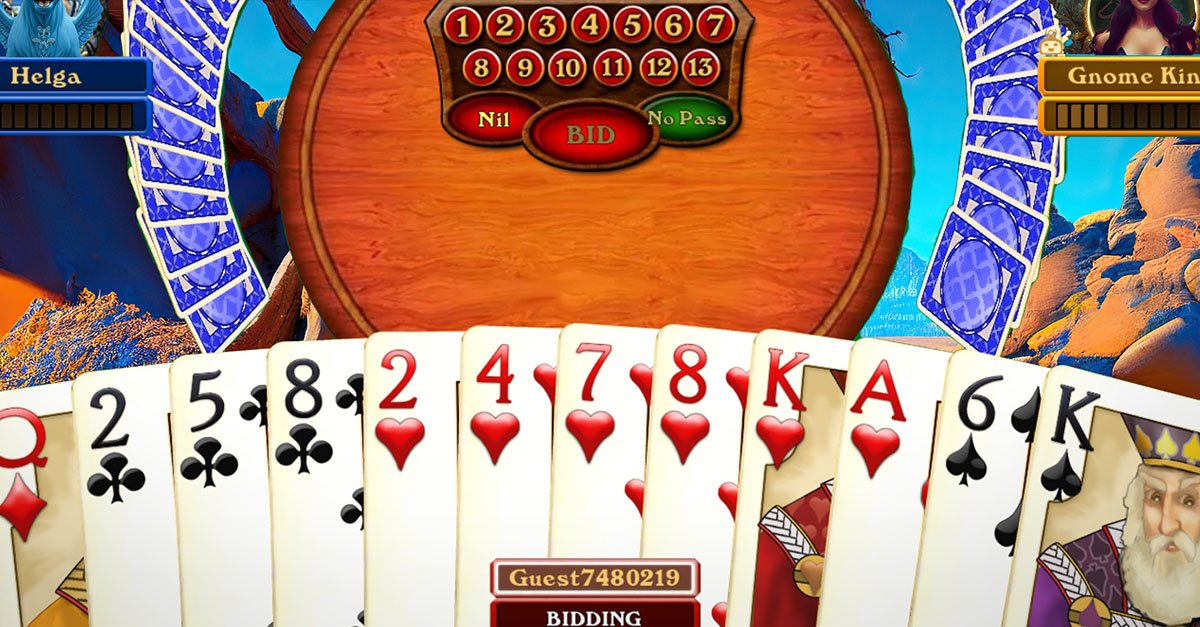Tips for bidding a Spades Hand : High-Card Points
-
17 Mar

Introduction
As a beginner in Spades, understanding high-card points (HCP) is crucial for making informed decisions during the bidding phase. While HCP is just one aspect of hand evaluation, it provides a solid foundation for estimating your hand's trick-taking potential. In this blog post, we will discuss how to use HCP to come up with a suggested bid number and introduce some basic bidding guidelines for novice players.
1)Calculating High-Card Points
To calculate HCP, assign point values to the high cards in your hand as follows:
- Ace: 4 points
- King: 3 points
- Queen: 2 points
- Jack: 1 point
Add up the points for all high cards in your hand. The total will give you a basic idea of your hand's strength.
2) Determining a Suggested Bid Number
Once you have calculated your HCP, you can use it as a starting point to come up with a suggested bid number. A simple method for beginners is to divide your HCP by 3:
Suggested Bid Number = HCP ÷ 3
For example, if your HCP is 9, your suggested bid number would be 3 (9 ÷ 3 = 3).
Keep in mind that this method is a rough guideline and does not account for other factors like trump suit quality and distribution. As you gain experience, you will learn to consider these additional factors during hand evaluation.
3) Basic Bidding Guidelines for Novices
- If you have a high HCP (12 or more) and a strong trump suit, you can consider bidding more aggressively.
- If you have a low HCP (6 or fewer) and a weak trump suit, it might be best to bid conservatively or even pass.
- If you have a moderate HCP (7 to 11) and an average trump suit, use your judgment and consider your position at the table when deciding your bid. In general, it's safer to underbid in this situation.
Remember that these guidelines are just a starting point. As you gain experience, you'll develop a more nuanced understanding of when to bid aggressively or conservatively.
4) Going Beyond HCP
As you progress in your Spades journey, you'll learn that HCP is just one aspect of hand evaluation. It's essential to look beyond HCP and consider other factors like trump suit quality, distribution, and your position at the table. In future blog posts, we will explore these additional aspects of hand evaluation to help you refine your bidding and playing strategies.
Conclusion
Understanding high-card points and using them to determine a suggested bid number is a fundamental skill for novice Spades players. By mastering HCP and following basic bidding guidelines, you can build a strong foundation for your Spades game. Keep in mind that HCP is just one aspect of hand evaluation, and as you continue to play and learn, you will develop a more comprehensive understanding of how to assess your hand's strength in Spades.
